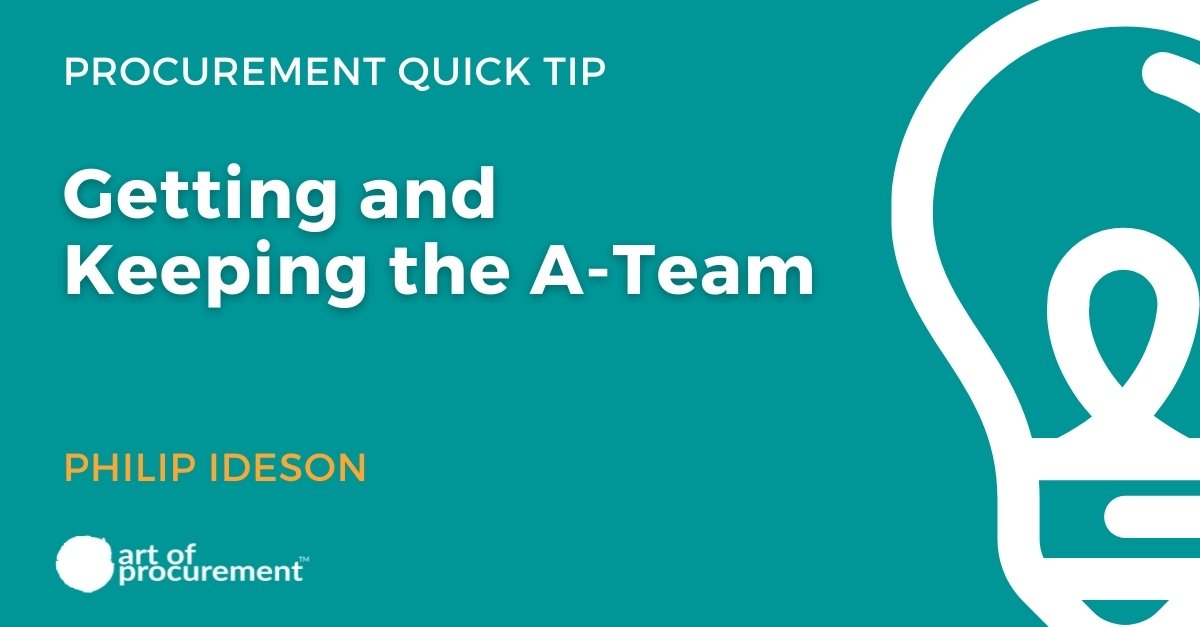
Anyone that has ever sourced professional services knows that one of the top concerns is having a firm bid – and potentially introduce you to – the ‘A-team’ to win your business. Then, once the contract is signed, they swap them out for the B-team (or the C-team) when it comes time to actually do the work.
We’ve all been there; the hotshots pitch the business, and then the benchwarmers end up delivering the business. Worst of all, you’re paying the rates you agreed to with the A-team in mind. This is a particularly common challenge in the creative space, where skills are hard to specify and even harder to contract. What can procurement do to prevent falling into this trap?
- Require your potential account leader or the delivery manager or even the extended team members to be part of the pitch process. You could require it as a condition of participating in the RFP process. This is particularly effective when you’re working with smaller suppliers, because they have less of a bench to pull from.
- Name key employees that were part of the pitch process in the contract. Make sure their actual names are documented and stipulated in the contract. Even if you don’t get all of the names down, push to name people in key roles, like the account leader or the delivery manager or someone really specific that will play a large role in the delivery.
- Name key roles or the job titles in the contract and require approval for changes. That way, if there’s a change in that person, the provider has to secure your approval. That will protect you from being ‘downsized’ to a junior member of the team for execution while their higher-level counterparts provide theoretical oversight from another project. This will also protect you against natural attrition; if your point of contact or project lead moves on or goes to another account or gets a promotion or joins the circus, you have a voice in selecting their replacement.
- Use outcome-based contracts with very specific KPIs. In some accounts, who the people are might not be nearly as important as the outcomes you’re looking for. This works best when the result matters more than the how; focus on the outcomes and KPIs versus the employees or the individuals that are going to service your account.
The hard truth here is that most professional services firms juggle their best resources across different accounts. Those resources are going to spend the majority of their time on the accounts of the provider’s best, most strategic clients. Then the question becomes, are you one of their ‘best’ clients?
Being a client of choice can mean a number of things, from revenue, to strategic importance, to being the easiest to work with, to being the first client in an industry the provider wants to break into. And it’s not always just about the dollars. Spend some time thinking about what a partnership with your company and team offers the supplier and make sure they know it. Tell them outright what you intend to do to become a customer of choice.
Final thought: focus on strategic governance. Focus on fostering trust and building a spirit of partnership. At the end of the day, those are the best ways to ensure that you get – and keep – the A-team.




